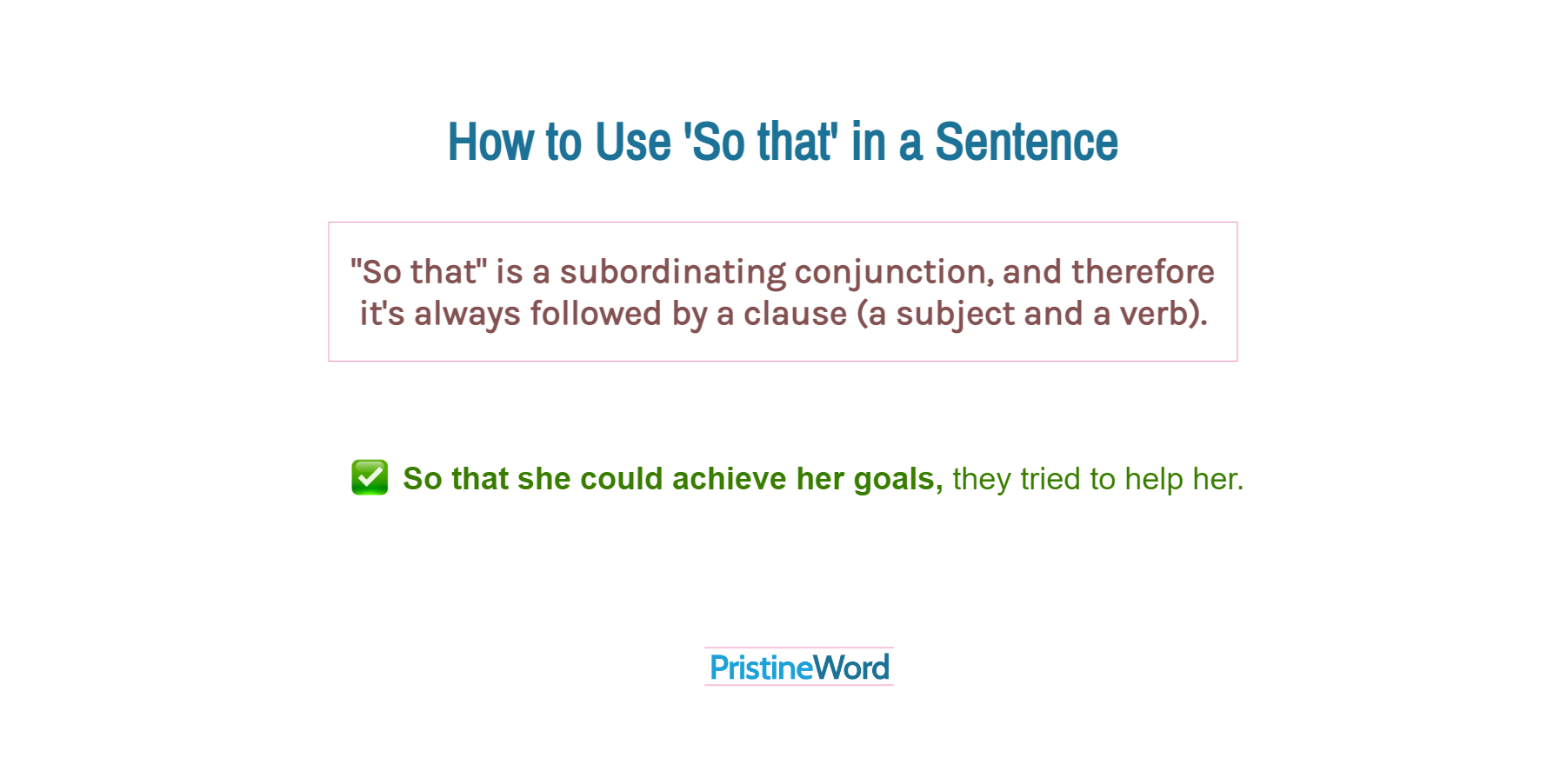"So that" is a subordinating conjunction, and therefore it's always followed by a clause (a subject and a verb).
"So that" is a subordinating conjunction, and therefore it's always followed by a clause, that is, a subject and a verb (e.g., "so that he can achieve it"). We introduce this compound conjunction to express purpose.
My daughter is staying on in the US for ten more months so that she can improve her English.
My daughter is staying on in the US for ten more months so that can improve her English.
Alternatively, you can use "so that" at the beginning of your sentence.
So that my daughter can improve her English, she's staying on in the US for ten more months.
When starting a sentence with "so that", add a comma after the introductory clause.
So that she could achieve her goals, they tried to help her.
So that she could achieve her goals they tried to help her.
You can replace "so that" by "in order that". They both have the same meaning and are used in the same way. "In order that", however, sounds more formal and is less common than "so that".
We created a trusting atmosphere (so that/in order that) the students could express their real life experiences.
"So that" can be used in a wide range of contexts, including formal and semiformal situations. In very informal language, we sometimes omit "that" from the "so that" construction.
My mother bought a teddy bear (so/so that) my children could play with it.
Notice that "so that" and "in order that" are commonly, but not always, followed by modal verbs, such as "would", "can", "could", "will", etc.

